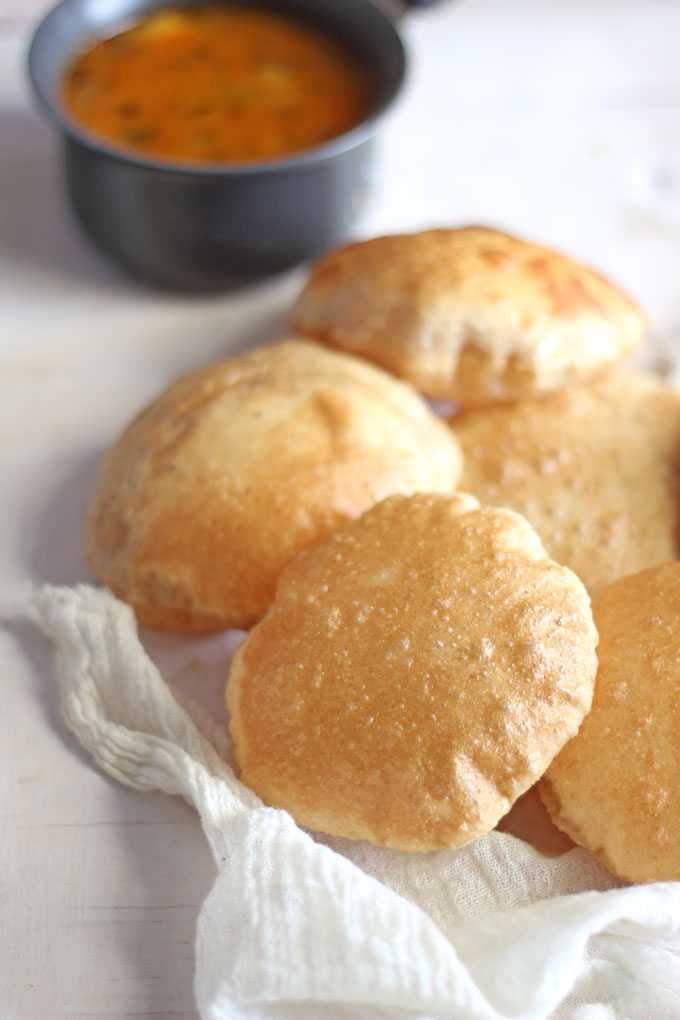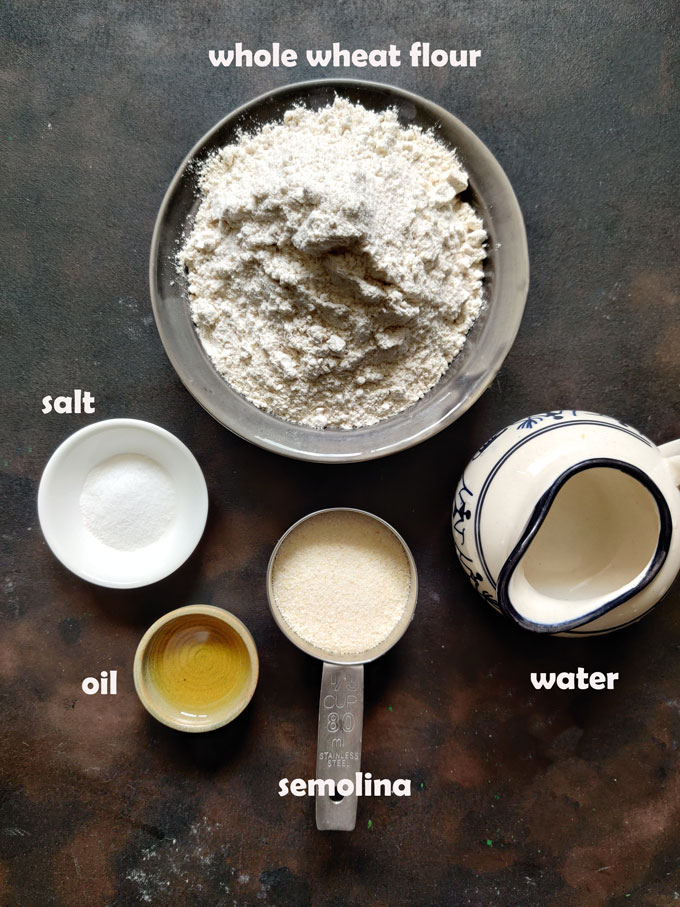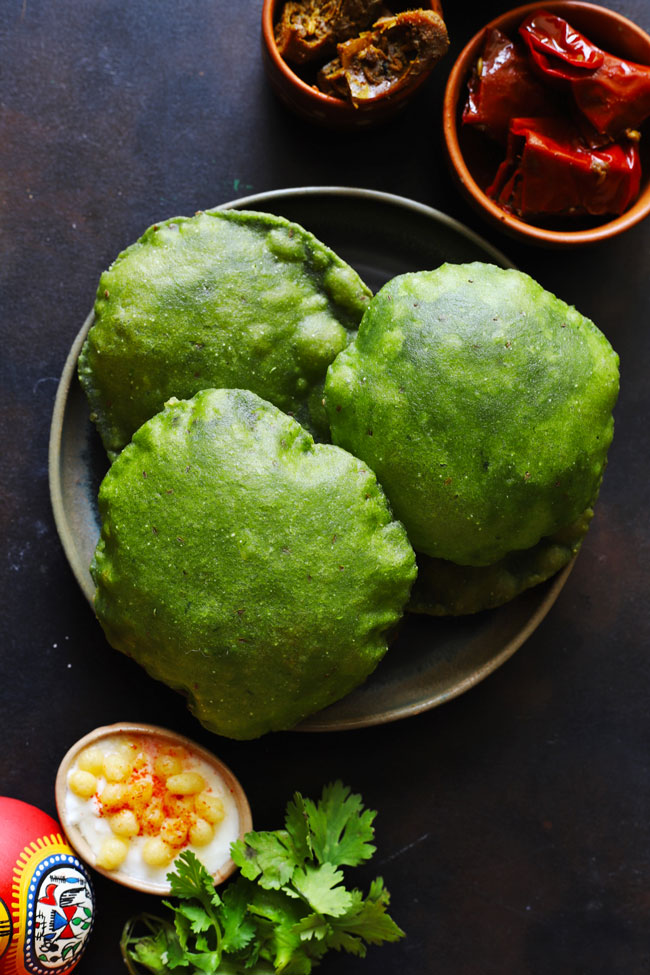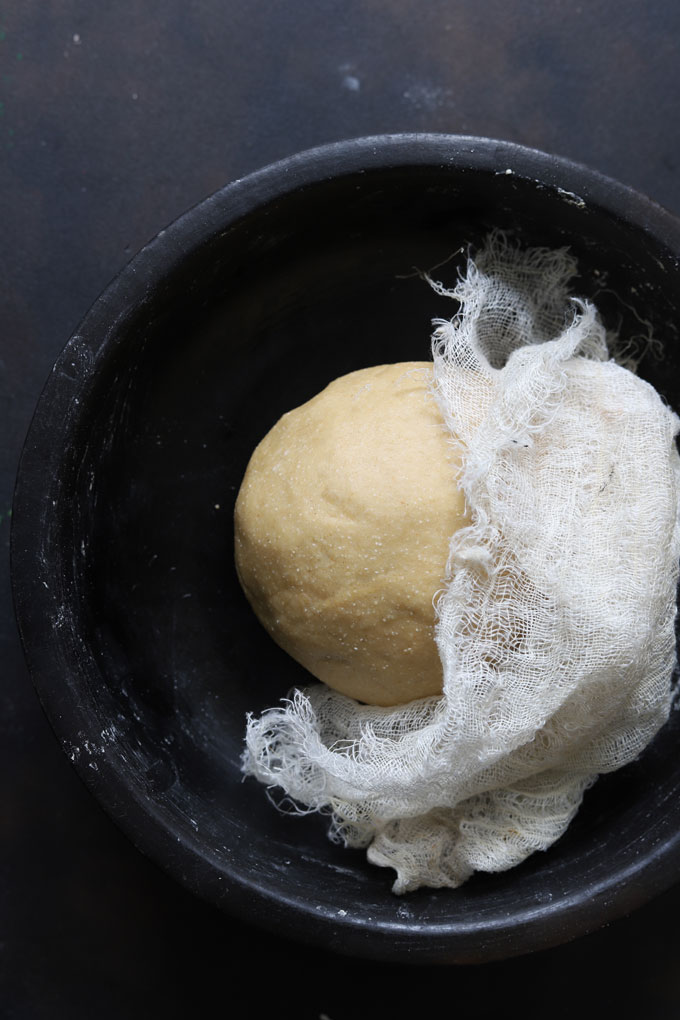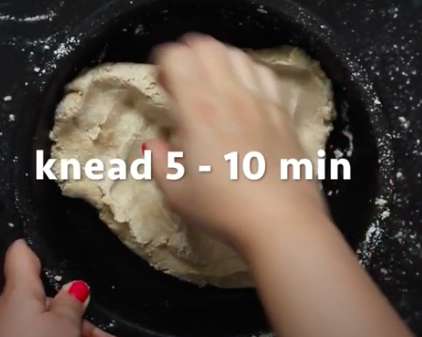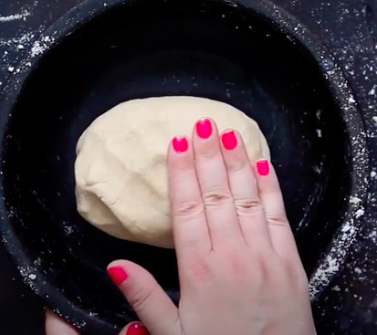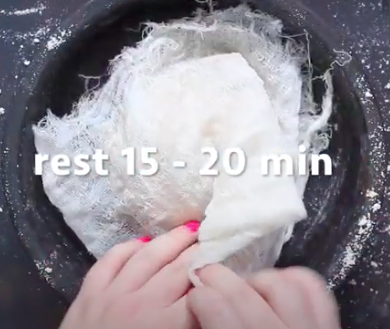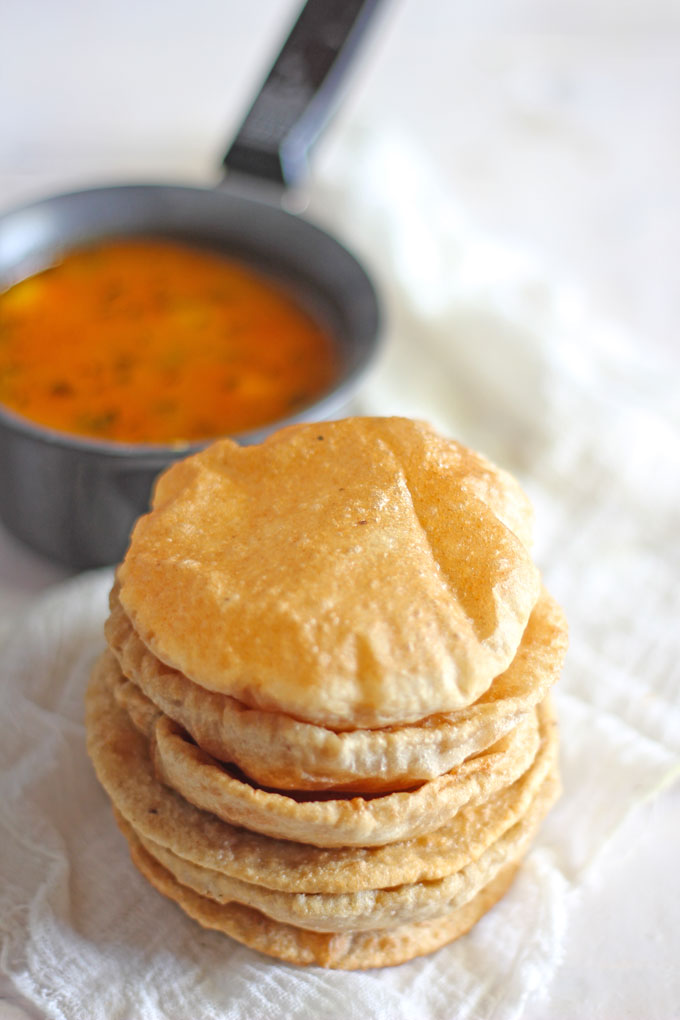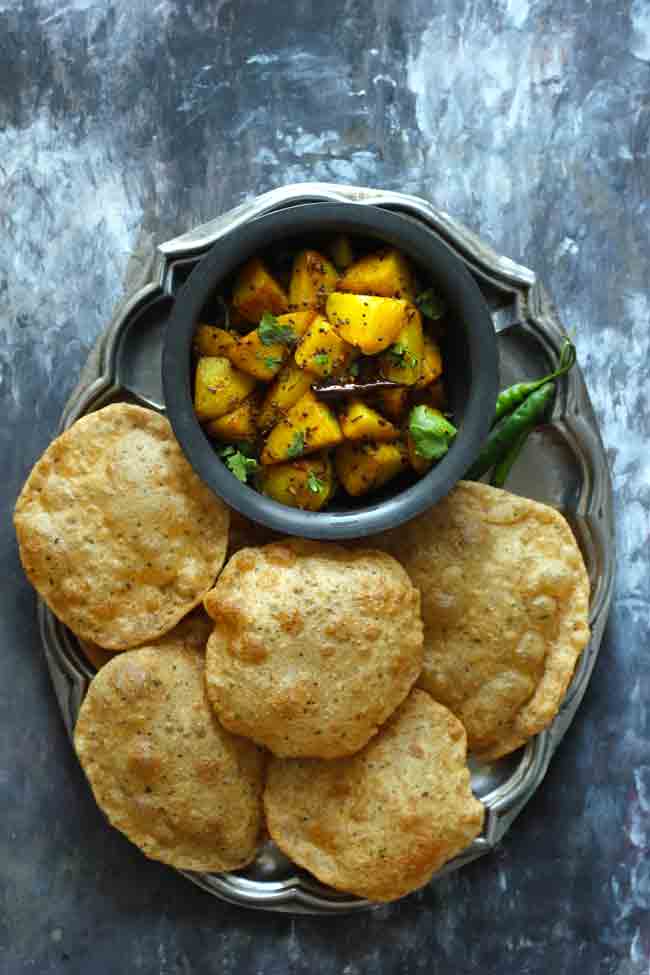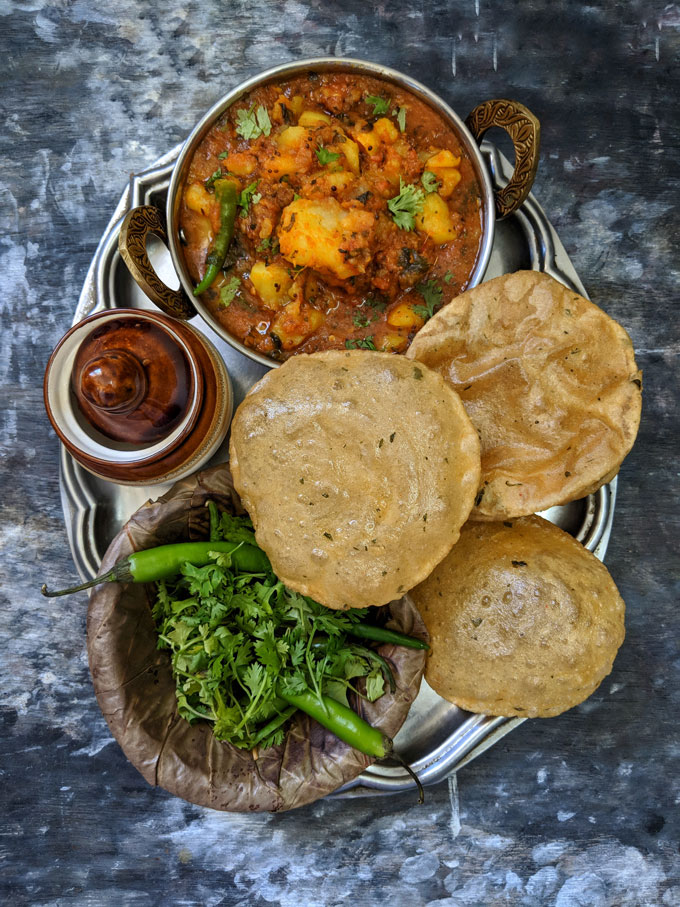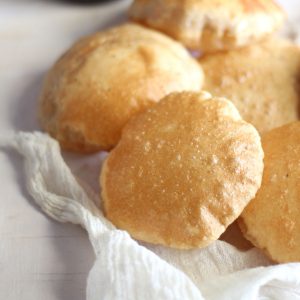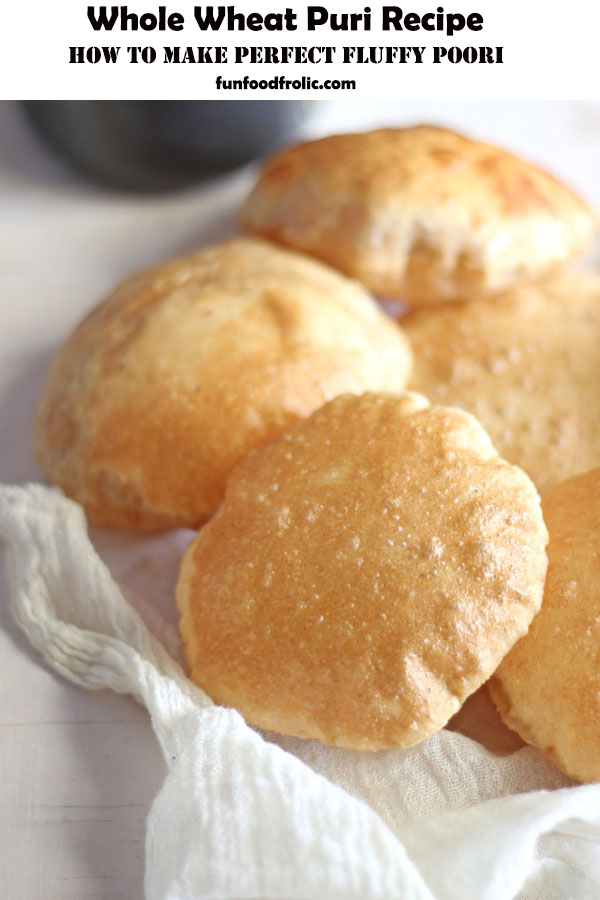What is ‘Puri’?
Puri or Poori is a deep-fried puffed-up Indian bread made with whole wheat flour (atta), salt, water, and oil. They are the most popular Indian side dish to accompany curries and gravy dishes. In India, the early morning walk in the forage of local breakfast or lust for piquant street food often concludes with Puri-Bhaaji. It has become a weighty part of our food culture and heritage. The culinary tour of the country is never considered complete without enjoying Puri dipped in hot and bold curries. Puri is always considered symbolic of the festive Indian meal. There is a kind of unsaid indulgence involved when we talk about poori. Difference between Poori and Bhatura Poori and Bhatura, are both deep-fried puffed-up Indian bread. But poori is made with whole wheat flour and is smaller in size. Whereas, Bhatura is made with an all-purpose flour fermented dough. It is of a big melon size and much thicker than a poori. In this post, you will learn,
Ingredients Required
Whole Wheat Flour: The key ingredient to make traditional atta poori. Semolina (Rava/Sooji): I combine semolina with whole wheat flour to give poori a crisp texture and to avoid oil-soaked poori. Salt: It gives flavour to the poori and increases shelf life. Water: Plain water at room temperature is required to bind the dough. Many puri recipes suggest using milk for making the dough. Oil: A flavourless refined oil with a high smoking point is best for deep-frying poori. You can use ghee as well for a rich and indulgent flavour. Puri Recipe Variations There are many puri recipe variations. A few of the popular ones are: Ajwain Poori: Also known as namak ajwain poori, in this variation, a teaspoon of ajwain (carom seeds/omam) is added to the dough for a spicy, earthy flavor. Methi Poori: The addition of fresh fenugreek leaves or kasuri methi (dry fenugreek leaves) in the dough makes poori all the way more delicious. Masala Poori: From red chilli, to cumin seeds, you can flavour poori dough with any of your favourite spices. Luchi: In West Bengal, the poori is prepared with all-purpose flour known as Luchi or loochi.
The Poori Dough
As I mentioned above, making perfectly puffed-up soft Poori at home is no uphill task. The one thumb rule I learned from my mother about making perfect puri, is to get the dough right. Texture: The dough for poori should be smooth, soft, pliable, yet firm to the touch. It should never be too soft, moist, or sticky. Kneading: Like any other unleavened bread, the dough for puri requires a good amount of kneading of 5 – 10 minutes to get the right texture. Adding more water will never get you the desired result. A good kneading time and minimal water use are ideal for preparing the poori dough. Resting: Once the dough is ready, give it a resting time of 15 – 20 minutes. At this stage, you can keep it in the fridge and in an airtight container to use later.
Secret of Fluffy & Puffy Puri
The rightly puffed-up puri swimming in hot oil is a big achievement. Here are a few of my secret tips (which I learned from my mother) to make fluffy and puffy puri: The thickness of the puri should be even. A too-thin or thick poori might refuse to puff up and is likely to soak up too much oil while deep-frying. Heating oil to the right temperature is a crucial step. Keep moderating the heat while deep-frying poori to adjust the oil temperature. Once the poori is added to the hot oil, press it gently using a slotted spoon. This helps in puffing up the poori. Last, always use a wide and heavy bottom pan to deep-fry the poori.
Watch Puri Recipe Video
My Tried & True Tips
Poori is too oily because the dough is too soft and sticky. Adding semolina to the dough helps in giving poori a crisp texture and makes them less oily.
Poori is not crisp because the oil is not heated to the right temperature while frying.
Poori is chewy because it is undercooked or not fried at the right temperature. Keep moderating the heat while deep-frying poori to adjust the oil temperature.
To store leftover puri, stack them and wrap them tightly in aluminium foil. Store them in an airtight container at room temperature for 1 – 2 days.
Serving Suggestion
Usually, the most popular festive feast is poori and aloo ki sabzi. Or poori with masala potato fry If you travel across North India, then chana – poori or chole – poori is also a widely loved meal combination On the occasion of Navratri or Janmashtami, poori is served with no onion and no garlic curries like arbi ki sabzi, dahi aloo curry, or phool makhana curry We Kumaoni like to savor poori with Pahadi Aloo Ke Gutke, and cucumber raita for an indulgent breakfast or brunch.
More Poori Recipes
Aloo Palak Puri Meethi (Sweet) Puri Masala Cheese Puri Subscribe to our weekly newsletter or follow us on Youtube for video recipes.
